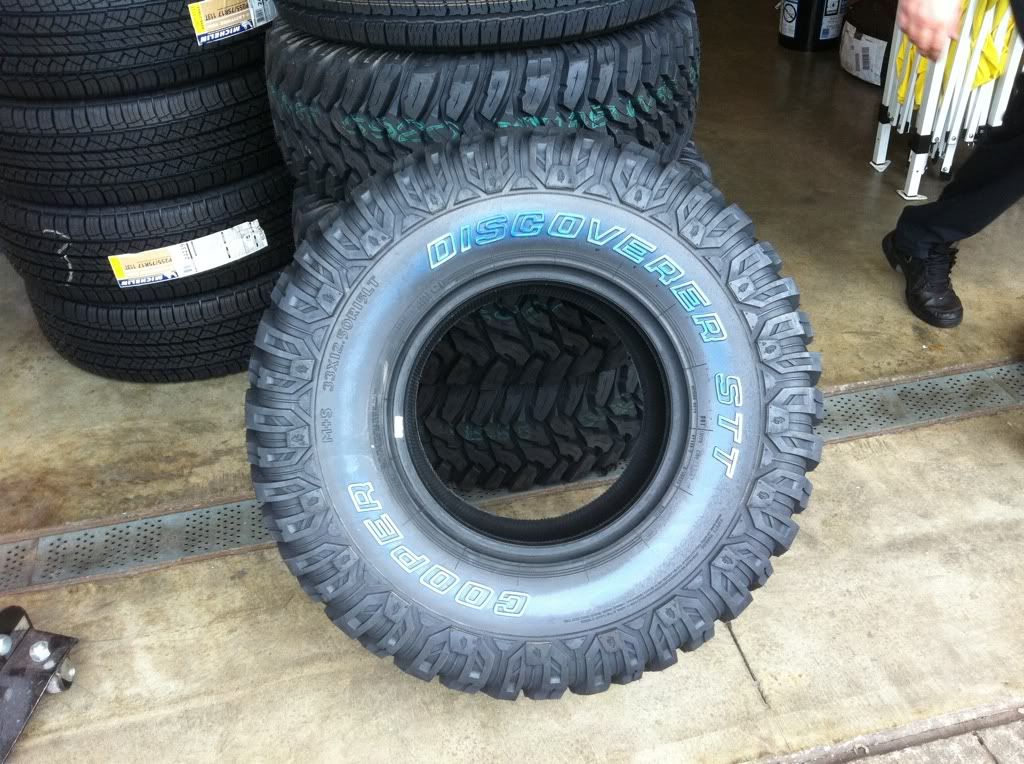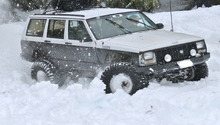Jeep Cherokee and Jeep Grand Cherokee 1984-2004: How to Check Tire Tread
Low tire tread can leave you making more frequent stops to the gas station. Read on to learn how to check the tire tread on your Jeep Cherokee or Jeep Grand Cherokee.
This article applies to the Jeep Cherokee and Jeep Grand Cherokee (1984-2004).
The difference between driving your Jeep on tires with little to no tread and driving your Jeep on tires with good tread is the same as getting or not getting into an accident. You might not realize it, but driving on tires with little to no tread can be extremely dangerous. Not only could your tires blow out as you pass over a bump or a patch of uneven, damaged road, but your tires might fail to slow down in time to avoid a collision due to the decreased level of traction. Driving in snowy or wet conditions can be even more dangerous, depending on your speed. Let's go over the easy steps you can take to read the tire tread on your Jeep Cherokee or Jeep Grand Cherokee, and possibly save yourself from a costly accident.

Materials Needed
- Tread depth gauge
- Penny (optional)
Step 1 – Check your tire tread depth
If you have a tire tread depth gauge, use it for more accuracy.
- To use it, simply insert the pin of the gauge into the groove of the tire tread. The gauge should give you the correct depth of your tires.
- Check the tread depth multiple times for a more accurate measurement.
If you don't have a tire tread depth gauge, grab a penny to insert it into the tire tread groove with Lincoln's head upside down and facing you. Newer tires will have defined grooves, whereas older tires might have shorter groove depths.
- Check to see if all of Lincoln's head is visible.
- If it is, you have less than 2/32 inch of tread depth.
- This is a dangerously low amount and signals the need for new tires.
- Visit a local Jeep dealer or tire shop to have the tires replace and serviced.

Step 2 – Compare the tire brands
All-terrain, mud tires, and stock tires all perform differently on the road. Therefore, you'll want to stick to recommended brands to get the most out of your Jeep.
- Mickey Thompson Baja MTZ are excellent mud tires and perform well in both mud as well as snow.
- BFGoodrich Mudd-Terrain tires also perform well in the mud and on the road.
- Cooper STT tires are also a brand that rate highly among Jeep owners.
- For hybrid tires, it's recommended that you stick to brands such as Goodyear Wrangler MT/R, S/T Maxx, or even the Cooper S/T.
- For a good off-road tires, check out the Michelin Military Surplus tires.
- If you're looking for all-terrain tires, it is recommended the BFGoodrich All-Terrain tire.
- For the best snow tires, Goodyear Wrangler is the go-to brand for Jeeps.

Step 3 – Understand how tire tread affects the tire pricing
Greater tire depth won't necessarily mean a higher price tag. Generally speaking, brand is the number one determinant of price, even when it comes to mud tires. For instance, the BFGoodrich Mud-Terrain T/A KM2 tires have a tread of 19/32, and cost approximately $230 per tire. Compare this tire to an off-brand tire that delivers a tread of 15/32, but costs approximately $160 per tire.
Now consider the KM2 against the Maxxis Bighorn. Both brands are rated "high" in performance as reviewed by Jeep owners and come with a 19/32 tread depth. However, there is an approximate $50 difference between the two mud tires. In all cases, brand means more than tire tread and this is usually the case industry wide.
Step 4 – Reduce the normal causes of tire wear
- Have your tires rotated every 3,000 miles.
- Maintain an optimum level of tire pressure at all times.
- Use the right type of tire for your area or driving use. For instance, if you live in an area where there is frequent snowfall during the winter season, it's highly recommended that you invest in a good set of snow tires. If you enjoy traveling off-road, it's highly recommended that you invest in a good set of mud tires to ensure you do not become stuck in a deep puddle while on your off-road adventures.

Related Discussion
- Tread Depth New Mud Tires - CherokeeForum.com






